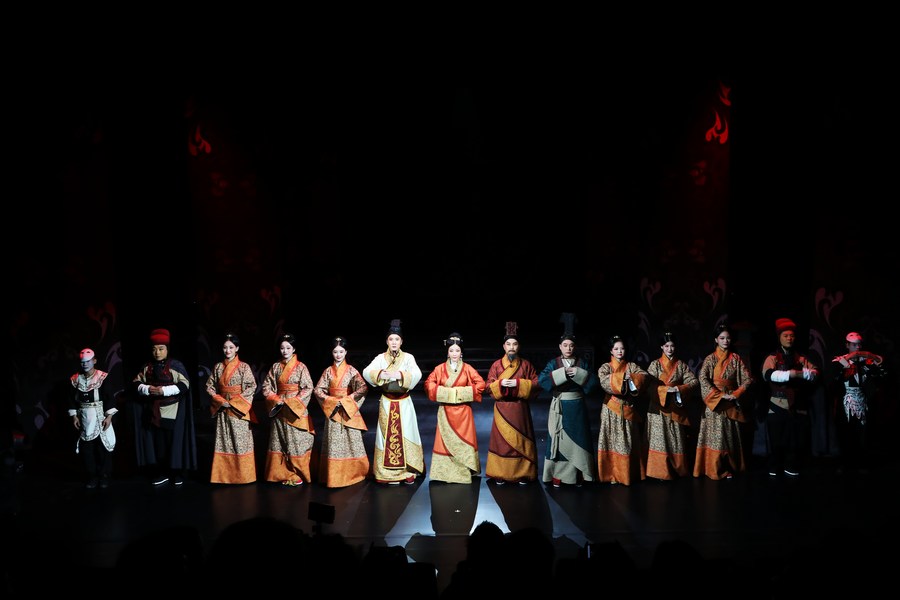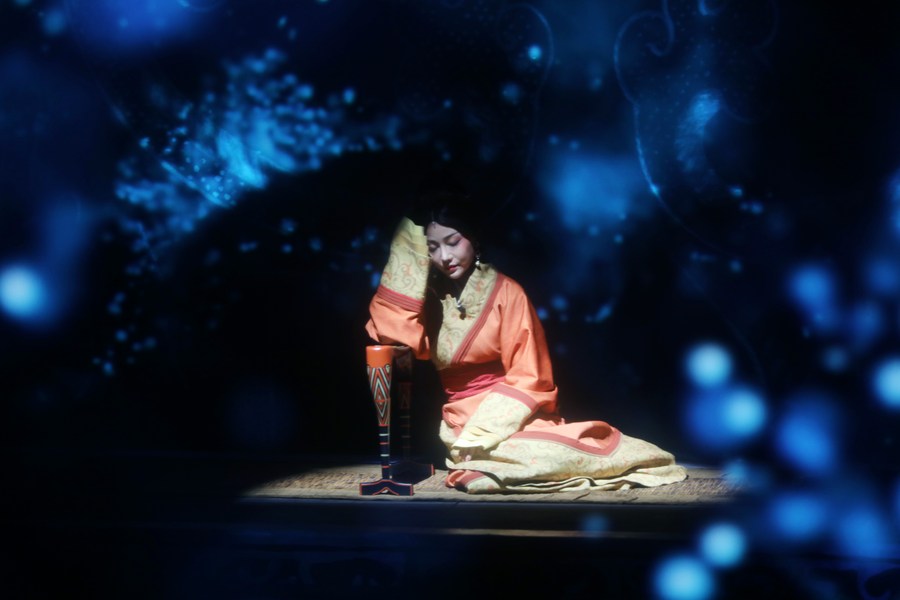Beijing Opera show breathes life into ancient relics at Hunan provincial museum

CHANGSHA, May 19 (Xinhua) -- In a packed auditorium at the Hunan provincial museum in central China, a special performance is being staged, transporting the audience back to the Western Han Dynasty (202 BC-AD 25).
Featuring melodious Beijing opera vocals, mesmerizing choreography and modern multimedia visuals, the show is centered on the world-famous Mawangdui Tombs, bringing to life the various ancient treasures discovered there.
"We want to tell a story that is consistent with the historical facts," said Chi Jun, the playwright behind the performance. "The performances that people watch in the museum theater upstairs must match with the artifacts they see in the exhibition downstairs."

Mawangdui, located in the eastern suburbs of Changsha, capital of Hunan, houses the grand tombs of the Marquis of Dai during the Han Dynasty (202 BC-220 AD), as well as his wife and son.
The site gained international attention in the 1970s when researchers opened a coffin and found a female corpse that showed no signs of decay. The corpse, now preserved in the museum, was over 2,200 years old and is said to be that of a woman named Lady Xin Zhui, the wife of the Marquis of Dai.
More than 3,000 precious cultural relics were excavated from the site, including intricately crafted lacquerware pieces and skillfully woven silk garments adorned with beautiful embroidery, all of which are housed in the museum. Now the special performance, produced in collaboration with the Peking Opera Protection and Inheritance Center of Hunan, leads visitors on a journey through the site's vibrant history, putting the relics center stage.
To ensure historical accuracy in depicting the life of Lady Xin Zhui, Chi drew inspiration from extensive research and consultation with museum experts. The narrative focuses on Lady Xin Zhui's role as a devoted mother, raising her son and preparing him for the nation's battles.

Ge Qianqian, deputy director of the Peking Opera Protection and Inheritance Center of Hunan, remembers that the performers went back and forth to the exhibition hall to observe and imitate the expressions, mannerisms and movements from the relics' figurines. These observations were seamlessly incorporated into their singing, recitation and acting during the performance.
According to the museum, the show utilizes 3D modelling and one-to-one replicas of the museum's cultural relics to create most of its props, costumes and other elements. The costumes worn by the performers were meticulously crafted based on excavated garments, and were thoroughly examined and approved by the museum's experts.
After watching the show, an anonymous college student said, "I had just been to the tomb exhibition, so when I came back to see the play, Lady Xin Zhui seemed more real to me. Her devotion to her nation is impressive."






